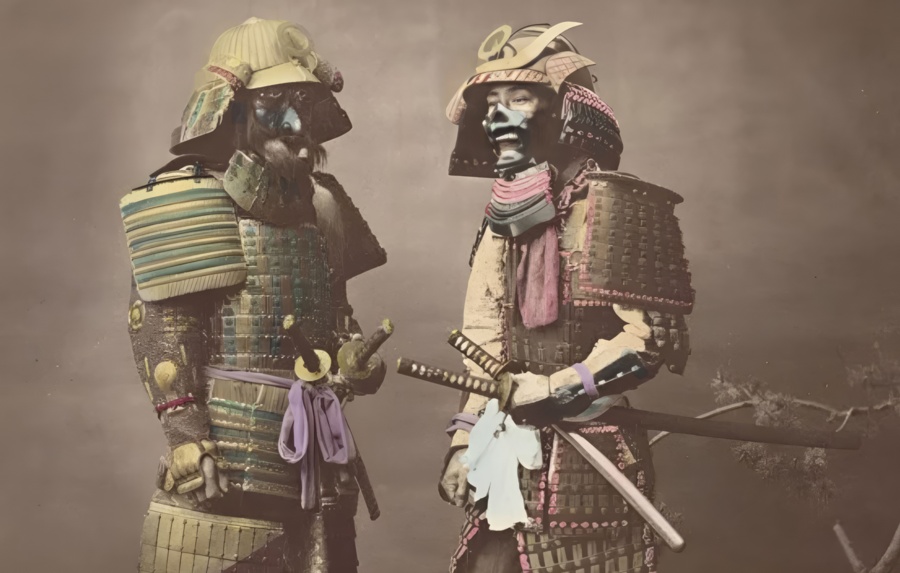Wakizashi vs Katana: Which is the Better Samurai Sidearm?
NO AI USED This Article has been written and edited by our team with no help of the AI

The wakizashi and katana are two of the most iconic swords wielded by Japanese samurai. Often carried together as a daisho set, these swords served as a status symbol and played distinct roles for the samurai during battle.
This article explores both weapons, their characteristics, differences, roles, and how they performed in combat.
Characteristics and Design Differences

The main difference between a wakizashi and katana lies in their length.
The shorter wakizashi typically measures around 15 to 24 inches (40 to 60 cm) in length, placing it in the shoto category which encompasses all short swords. Used as a secondary weapon, its shorter length makes it ideal for close quarters combat where quick and precise strikes are essential.
The katana, with its longer blade greater than 24 inches (60 cm) was the primary weapon in open combat. Classified as daito (long sword), it was designed for powerful slashing attacks.
Handle & Guard

As a one-handed sword, the wakizashi has a shorter handle measuring around 6 inches (15 cm). Its koshirae (mountings) and tsuba (guard) are also smaller. In some cases, the wakizashi may not have a handguard.
In comparison, the katana as a two-handed sword has a handle that is typically around 10 inches (25 cm) in length. Although the blade is typically secured to the handle with one mekugi (peg,) some katanas, especially those that are longer, may have two. The tsuba on the katana also tends to be larger for better protection.
Blade Profile
Traditionally, both the wakizashi and katana are forged from tamahagane steel and through differential hardening, feature a hamon (temper line).
However, the wakizashi’s shorter blade means that it has a softer curvature. In some cases, it can have a more reinforced blade for chopping, known as shobu zukuri or unokubi zukuri.
Meanwhile, the katana’s blade usually has a more pronounced curve, known as shinogi zukuri, designed for powerful slashing strikes.
Katana vs Wakizashi: What is Better for Combat?

The wakizashi, being much shorter, served as a secondary weapon to the katana. In a duel between a katana and a wakizashi, the katana would most likely win due to its superior reach.
As Seki Sensei, a master in Japanese kenjutsu, says, “I have a wakizashi, and my enemy has a katana. I have to take two steps to attack him but he needs just one step to reach me.”
On the battlefield, the katana served as a sidearm that could effectively become a primary weapon. Neither too long or too short, the katana became a weapon of precision, excelling in slashing and targeting gaps in armor.
When is the Wakizashi Better?
Due to its shorter length, the wakizashi excels in close quarters combat and indoors, allowing for quicker movements while keeping the other hand free for other uses such as hand-locking, grappling, disarming, or capturing an enemy alive.
It can also be used like a dagger, enabling its wielder to exploit gaps in armor. Smaller wakizashi (ko-wakizashi) also works well as a concealed weapon.
The Wakizashi and Katana in History

The wakizashi and katana were both companion swords of the Japanese samurai during the turbulent Muromachi period (14th – 16th century). Worn together by a samurai warrior, the pair was referred to as daisho.
The wakizashi served as a sidearm and backup weapon of the katana. They could be carried by classes other than samurai, such as merchants, farmers and townspeople. They’re usually associated with seppuku, the ritual suicide with disembowelment. During the Edo Period, samurai were not permitted to carry their katana indoors, but the wakizashi was allowed.

During the Sengoku Jidai (1467-1615 CE), katanas functioned as a secondary weapon alongside the yari (spear), naginata (polearm), tanegashima (rifle), or yumi (bow) and was often used as a last resort.
Eventually, during the peaceful Edo Period (17th-19th century), the katana not only became a symbol of the samurai due to its representation of virtues such as honor, discipline, and mastery, it was considered an extension of their soul.





